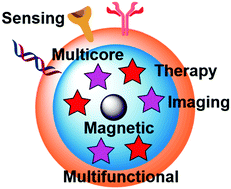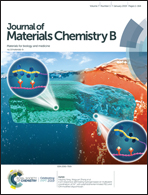Magnetic nanoarchitectures for cancer sensing, imaging and therapy
Abstract
The use of magnetic nanoparticles for sensing and theranostics of cancer has grown substantially in the last decade. Since the pioneering studies, which reported magnetic nanoparticles for bio-applications more than fifteen years ago, nanomaterials have increased in complexity with different shapes (nanoflowers, nanospheres, nanocubes, nanostars etc.) and compositions (e.g. core–shell) of nanoparticles for an increase in the sensitivity (imaging or sensing) and efficiency through synergistic treatments such as hyperthermia and drug delivery. In this review, we describe recent examples concerning the use of magnetic nanoparticles for bio-applications, from the surface functionalization methods to the development of cancer sensors and nanosystems for magnetic resonance and other imaging methodologies. Multifunctional nanosystems (nanocomposites, core shell nanomaterials) for theranostic applications involving treatments such as hyperthermia, photodynamic therapy, targeted drug delivery, and gene silencing are also described. These nanomaterials could be the future of medicine, although their complexity raises concerns about their safety.

- This article is part of the themed collection: International Year of the Periodic Table: Applications for magnetic materials


 Please wait while we load your content...
Please wait while we load your content...